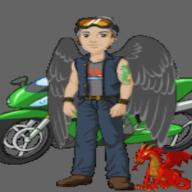how is food chain start?
2008-01-22 5:53 am
Please tell me how, where, when and why the food chain start.(please give the link/website to me too)
回答 (1)
2008-01-22 5:57 am
✔ 最佳答案
Primary producers, or autotrophs, are species capable of producing complex organic substances (essentially "food") from an energy source and inorganic materials. These organisms are typically photosynthetic plants, bacteria or algae, but in rare cases, like those organisms forming the base of deep-sea vent food webs, can be chemotrophic. Organisms that get their energy by consuming organic substances are called heterotrophs. Heterotrophs include herbivores, which obtain their energy by consuming live plants; carnivores, which obtain energy from consuming live animals; as well as detritivores, scavengers and decomposers, which all consume dead biomass. Energy enters the food chain from the sun. Some energy and/or biomass is lost at each stage of the food chain as; faeces (solid waste), movement energy and heat energy (especially by birds and mammals). Therefore, only a small amount of energy and biomass is incorporated into consumer's body and transferred to the next feeding level, thus showing a Pyramid of Biomass.Example of a food chain in a Swedish lake
Example of a food chain in a Swedish lake
A food chain is the flow of energy from one organism to the next. Organisms in a food chain are grouped into trophic levels — from the Greek word for nourishment, trophikos — based on how many links they are removed from the primary producers. Trophic levels may consist of either a single species or a group of species that are presumed to share both predators and prey. They usually start with a primary producer and end with a carnivore. The diagram at right is a food chain from a Swedish lake. It can be described as follows: osprey feed on northern pike, that feed on perch, that eat bleak, that feed on freshwater shrimp. Although they are not shown in this diagram, the base of this food chain is likely phytoplankton. Phytoplankton are autotrophs, and are the base of the food chain by virtue of their ability to photosynthesize. Phytoplankton, as well as attached algae form the base of most freshwater food chains. It is often the case that biomass of each trophic level decreases from the base of the chain to the top. This is because energy is lost to the environment with each transfer. On average, only 10% of the organism's energy is passed on to its predator. The other 90% is used for the organisms life processes or is lost as heat to the environment. Graphic representations of the biomass or productivity at each trophic level are called trophic pyramids. In this food chain for example, the biomass of osprey is smaller than the biomass of pike, which is smaller than the biomass of perch. Some producers, especially phytoplankton, are so productive and have such a high turnover rate that they can actually support a larger biomass of grazers. This is called an inverted pyramid, and can occur when consumers live longer and grow more slowly than the organisms they consume. In this food chain, the productivity of phytoplankton is much greater than that of the zooplankton consuming them. The biomass of the phytoplankton, however, may actually be less than that of the copepods. Directly linked to this are pyramids of numbers, which show that as the chain is travelled along, the number of consumers at each level drops very significantly, so that a single top consumer (e.g. a Polar Bear) will be supported by literally millions of separate producers (e.g. Phytoplankton). Food chains are overly simplistic as representatives of what typically happens in nature. The food chain shows only one pathway of energy and material transfer. Most consumers feed on multiple species and are, in turn, fed upon by multiple other species. The relations of detritivores and parasites are seldom adequately characterized in such chains as well.The food chain has a producer, consumer, herbivore, carnivore, omnivore, decomposer.
[
收錄日期: 2021-04-13 15:00:01
原文連結 [永久失效]:
https://hk.answers.yahoo.com/question/index?qid=20080121000051KK07923

